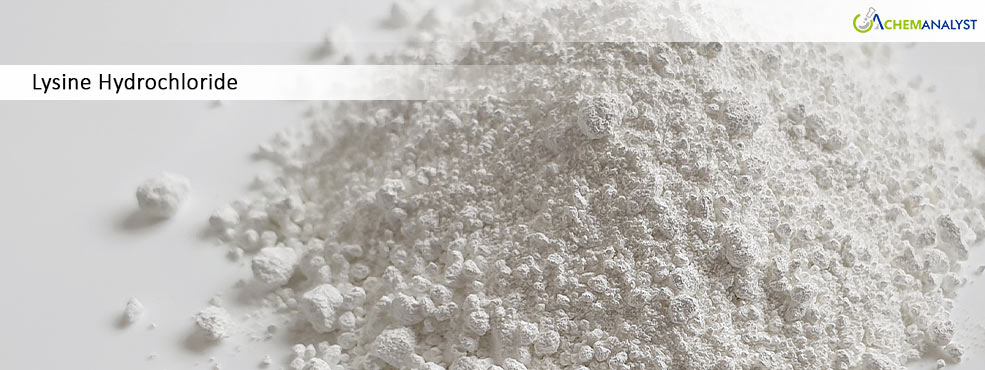Lysine Hydrochloride Market in Flux: Supply Chain Realignments and Pricing Strategies
- 10-Feb-2025 3:15 PM
- Journalist: Jacob Kutchner
The Lysine Hydrochloride market is set to undergo significant shifts with prices witnessing an upward trend across the global market including the North American region and European region. Initially, manufacturers resume price offers in Europe following the implementation of new EU anti-dumping duties. In the coming months, Lysine Hydrochloride prices in the European market will likely continue their upward trajectory as the industry adapts to the revised trade policies. The new reality of higher import tariffs will reshape procurement strategies, encouraging buyers to secure contracts at elevated price levels, with some first business transactions for Q2 already taking place at these rates.
The anti-dumping measures imposed by the European Commission aim to counteract unfair pricing practices from key exporting nations, thereby supporting domestic producers. However, this regulatory move is expected to create ripple effects across the global Lysine Hydrochloride trade. European buyers will face higher costs, leading to adjustments in feed formulations and sourcing strategies to mitigate the financial burden. As a result, demand for alternative feed additives could rise, influencing the broader amino acid market including the Lysine Hydrochloride.
While Europe experiences a sharp increase in Lysine Hydrochloride prices, other regions, including North America and Asia, are projected to witness relative price stability. Market participants in these regions will likely observe the European developments closely, assessing potential supply chain shifts and price competitiveness. The disparity in pricing trends with respect to the Lysine Hydrochloride between Europe and other global markets may encourage exporters to explore alternative trade routes and strategies to maintain competitive positioning.
Another key factor influencing the global feed additive landscape will be the evolving supply chain conditions. Improved logistics and inventory management in major producing regions will help stabilize supply for Lysine Hydrochloride, but disruptions related to trade regulations, transportation costs, and raw material availability could contribute to pricing fluctuations for Lysine Hydrochloride. The ongoing geopolitical and economic developments in key manufacturing hubs will also play a critical role in shaping price trajectories in the coming months.
Looking ahead, the global Lysine Hydrochloride market is expected to remain dynamic, with regulatory shifts, supply chain adjustments, and demand fluctuations driving price movements. European buyers and suppliers will need to navigate this changing landscape by reassessing Lysine Hydrochloride’s procurement strategies and optimizing supply chain efficiencies. Meanwhile, market participants outside Europe will closely monitor developments, ready to capitalize on potential trade opportunities arising from these shifts.
As Q2 approaches, the industry will likely see a rebalancing of supply and demand dynamics, with Lysine Hydrochloride pricing trends in Europe serving as a benchmark for future market movements. While higher prices may pose challenges for buyers, they could also drive investment in regional production capabilities, potentially reshaping the global competitive landscape for amino acids including those for Lysine Hydrochloride. The coming weeks will be critical in determining how the market adjusts to the new trade conditions, with both short-term and long-term implications for the global feed additive industry.



